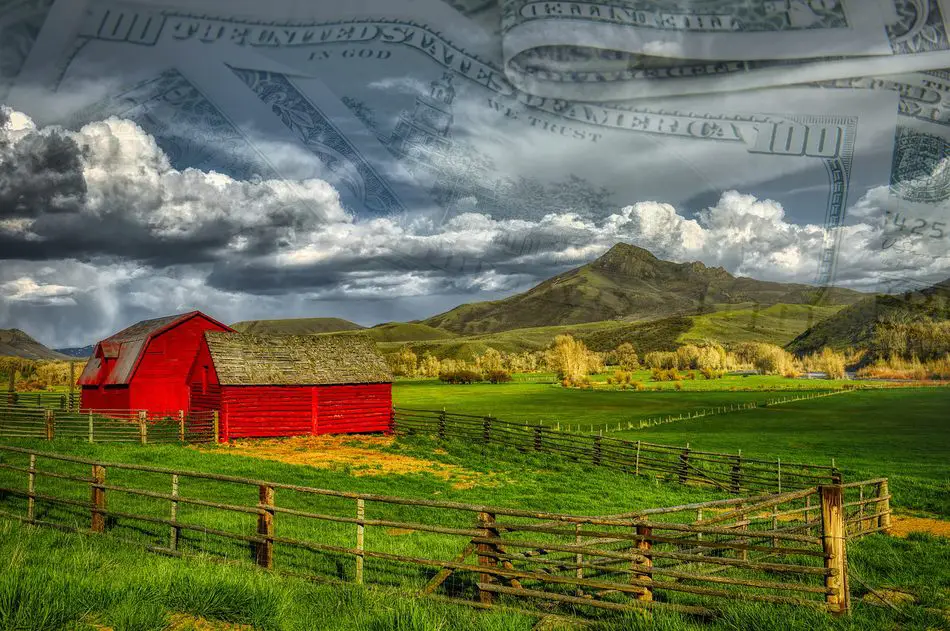Living off the grid is more than just a trend or a cool expression. It is an actual way of life that many people are drawn to. However, not all of them are aware that such a lifestyle is not about living in the wild, in a cave or a hut. There are real expenses and costs that living off the grid entails.
I have done an extensive research to answer how much it costs to live off the grid. Here is the most detailed information that includes both the initial costs and the day-to-day expenses.
The Initial Cost of Living off the Grid
Let’s talk real numbers. There are expenses that you cannot avoid. You need to purchase the land, to establish your off-grid homestead, to get all the systems working. Here is a list of things that you will probably need right from the start. See what applies to you and add the relevant numbers.
Land
While free lands do exist, you might consider avoiding them. They come with undesirable baggage and conditions, and you will find yourself spending tons of money into making the land livable.
A good lot size for off grid living is 1-5 acres, and in any state this will cost you somewhere between $20,000 and $30,000. If you wish to establish a good garden on your lot, the preferred states for this are:
- New Jersey
- Florida
- California
- Hawaii
- North Carolina
- Texas
- Kentucky
- Missouri
- Arkansas
For further reading, I have a very detailed article about the best places to live off the grid in the USA.
House
Naturally, you will need a shelter. Some lands already have a house that you can inhabit, so you probably should look for those. Lots that weren’t developed require more work and preparation, such as making a road, digging foundations, and then building the house itself. You can use your lot’s timber as a building material. If you’re lucky, maybe some forestry company will clear your lot and pay you for letting them to do so.
So how much will an off-grid shelter cost?
- If you don’t have building skills, get a contractor. Almost any American contractor will build you a stick frame house. It will cost you between $120,000 and $150,000.
- If you want a rammed earth house, the price will go up to $200,000.
- If this sounds like a steep price, there are simple manufactured houses that can be bought for $20,000.
- Another option is a cabin, which can be purchased for $50,000.
- An RV seems to be a popular option, especially if you intend to move around once in a while. A second hand motorhome can cost around $10,000 – $20,000. I have an extensive article on off the gird RV living, you should check it out to learn more. Another good read is a post on self-contained RVs, which can make an ideal housing.
- Living off grid in a van is another affordable option.
- And finally, if your budget at this point does not allow such an investment, go for the best tent you can purchase. It will cost you somewhere near $500. I have made a list of the best emergency shelters and tents.
Keep in mind that you are just at the beginning of your off-the-gird journey, so maybe a tent or a tiny house is a better choice. Later you can upgrade to a bigger house. I can recommend that you read more on how to prepare for off grid living, especially the part about the living space.
Power Systems
The very meaning of being off the gird is that you are not connected to the power lines. You are not dependent on the nation’s power grid, and therefore your carbon footprint is minimized. But you still need your own source of alternative energy. You can go either for a wind turbine or a solar panel. One of those plus an inverter will cost around $1,000. This can be enough to power one refrigerator.
Naturally, you’d want to go for more. You can add more turbines or panels to your system. A regular household will need 5KW power to run. The cost of installing enough solar panels/wind turbines to reach that goal is $30,000. While this does sound like a lot at first, the system will pay off within 4-20 years. The payoff partially depends on whether or not you receive tax credits. Additionally, in some areas, you can even sell excess electricity back to the local power grid.
Another expense is the batteries. Your free power system will require a backup. A new battery costs $200-$300, so having a complete backup will cost you about $7000. The batteries need to be replaced once in several years. You can also go for used batteries to reduce costs; you can find those at a server farm.
Please notice that the costs are also affected by whether you choose off grid or on grid solar. Also, if you do not wish to fix a solar panel to your rooftop yet, here is a list of the best portable solar panels.
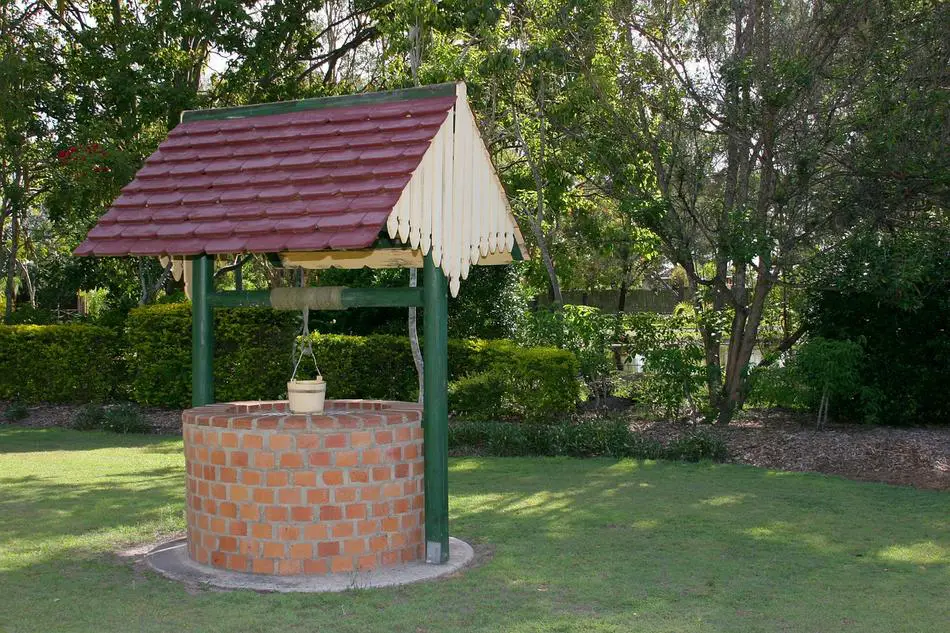
Well
Do you need to dig a well? Not if you have a fresh water source on your property. This can be a lake or a stream. Remember that this water must be treated and filtered before you can consume it and use for washing, since it may contain pathogens and chemicals.
If there is no body of water nearby, then your property requires a well, which can be made by drilling into the ground and then installing a pump. The depth of the well affects its cost, since well-digging companies ask for about $15-$100 per foot. A regular well is usually about 100-150 feet deep, which means that the price for the hole drilling can be between $1,500 and $15,000. But that’s not the final cost, as you also must pay for the plumbing, electrical work and the pump itself. These add another $800 to $2,000 to the total cost. You will also need a water tank to storage the pumped water in it; it costs about $500 – $1,000.
For those who wish to have several wells, perhaps a cheaper solution will be doing it yourself. Invest $10,000 – $15,000 and purchase a drilling rig. A compact hydraulic rig comes in two versions: stand alone or as an attachment to a tractor/Bobcat.
Additional Buildings
Once you have your house built, here are some outbuildings that can be erected nearby – and their costs.
- A barn has a multitude of features that affect its price. Height, electricity, tack room, stalls, flooring, temperature control – all these parameters decide how much you will spend on your barn. For instance, a concrete floor is about $6 per square foot. If you decide to build it on your own, it’s $10 – $15 per square foot for a pole barn and $8 – $10 per square foot for a steel frame. All in all, a barn costs $10,000 – $20,000 in average.
- A greenhouse is a welcome addition to any homestead. There is a small greenhouse available for just $750, which can give your seeds an early start. A bigger setup costs about $10,000, but it provides you with crop all year long. Of course, you can always try building one on your own.
If you need a smaller and very affordable solution, then I can suggest trying Amazon’s Choice, Home-Complete Walk-In Greenhouse. It doesn’t cost that much and is suitable for both outdoor and indoor gardening. This greenhouse comes with 8 study shelves, which you can fill with plants, herds, seedlings and even flowers. It’s really easy to assemble, no tools needed. It can be the perfect solution to have a year-long growing season. It can also be anchored to the ground for extra stability.
- Root cellar can be successfully utilized to store food. Again, the cost depends on the size. A miniature barrel-like cellar is no more than $100. Larger cellars can cost up to $1,000.
- You can use leftover lumber to build a chicken coop. If you prefer to purchase one, the simplest coop costs about $150 and can house up to 4 chickens. A more advanced model is about $1,500.
The best one on the market is Best Choice Products Outdoor Wooden Chicken Coop (available on Amazon). It has a sliding door and a ramp, so that chickens can comfortably enter the raised housing area. This coop is made of quality fir, it’s rainproof and weather resistant. And pershaps the best feature is that it can be easily cleaned by just sliding out the bottom tray.
Gardening
Let’s assume again that you have a family of four. To have enough vegetables for everybody, the garden should cover an area of 4,000 square feet. You can purchase enough seeds for the whole year by spending no more than $100. When the garden starts producing, you can gather the seeds from the plants and use them later to reduce costs.
You will need to invest another $500 – $1,000 for a wire fence, to protect the garden from the foraging animals. The irrigation system is another expense. The cheapest solution would be buying a hose. The more expensive one involves having multiple timers.
Decide ahead what fruits, berries and nuts you wish to grow as well. A tree or a bush can cost from $15 to well over $100. Don’t get too excited by all the options, otherwise you’ll find yourself spending hundreds of dollars. Find out how every plant grows in your area, how much it produces, and how big it can get.
You can cut down some of the expenses by using compost instead of a fertilizer. Get a bin for the compost, or simply start a pile in the yard. Compost can make your life much easier.
Aquaponics
This is a somewhat advanced ecosystem that combines growing plants and fish in the same watery location. When done right, the fish and vegetables from aquaponics can feed your entire house 365 days a year. Not surprisingly, the cost depends on the size: $500 for a small system and $1,000 for an aquaponics system to feed a family of 4. If you intend to produce enough for the entire year, you’ll need a greenhouse around the system (see the costs above). Additional costs include fish food, water testers, electricity, and so forth.
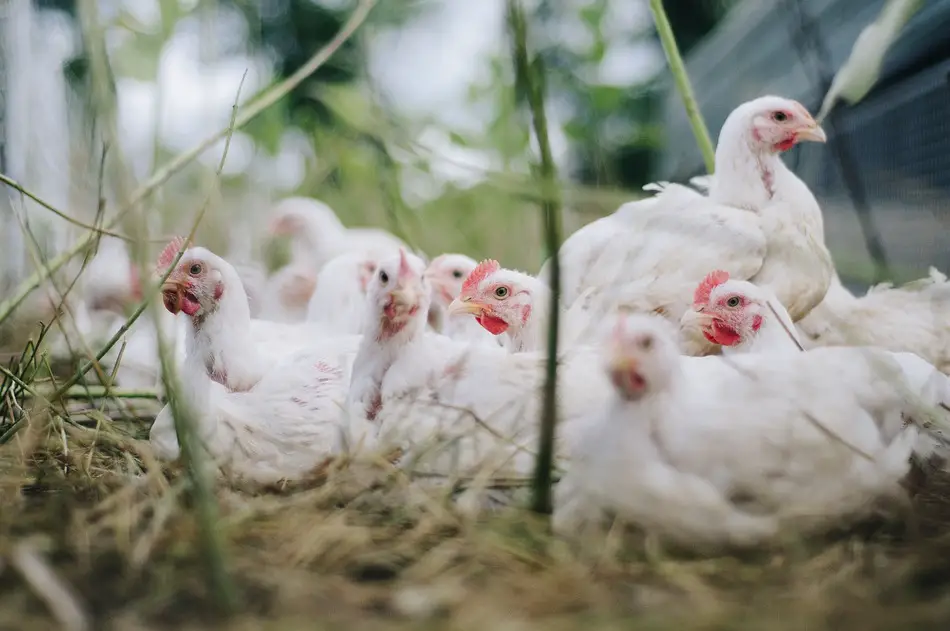
Livestock
If you establish your own mini-farm, then having some animals will vastly improve it. Here are the costs of livestock in off the grid living.
- Chickens usually don’t cost that much, you can get a few of them for $5 – $10 a bird, plus $2 for a monthly feed for one chicken. One chicken lays enough eggs to feed one person, so at least have as many chickens as there are people living in the household. The chicken live in a chicken coop that I mentioned earlier.
- Pigs cost considerably more. If you buy them just for food, their price is anywhere between $15 and $100. 1-2 pigs are enough for a family of 4 to feast on them for a year. Breeding pigs are much more expensive, around $3,000. Add additional $500 for their housing and fence. The food that the pigs eat is around $50 a pig, but you can also feed them with scraps or plants from the garden.
- Cows’ prices vary between the breeds, and usually they are between $1,000 and $3,000. The meat from one cow can feed a family of 4 for the entire year. Cow’s food is up to $200 a month, but you can again reduce the costs by scraps and garden produce. Ideally, a cow will be out there on a pasture. Each cow needs an acre of pasture for itself, providing there is enough grass. Also, a big pasture requires good fencing, which is a one time payment of about $2,500. On the other hand, if you keep the cows to milk them, you save money on milk and many dairy products. And if you have a herd, you can have calves for sale or for meat, so your investment is returned to you.
Geothermal Pump
A great way to utilize earth’s temperature is by installing a geothermal heat pump. The earth maintains a permanent heat of 50F at the depth of 8 feet. Therefore, a heat exchanger can take that heat and direct it to your house, where you can enjoy a cooler summer or a warmer winter. Even if you live off the grid with no money, this is a great investment that you should seriously consider.
To have the exact price for the geothermal pump, you will need to ask a contractor for a quote. Several parameters can change the final price, such as the age of your house, its insulation quality, its size, and how much space there is for the heat exchanging loop field.
Grey Water
Grey water system collects your household’s used water, such as the water from sinks, shower, dish washer, washing machine, and so on. This water can be reused either to flush the toilets or for the garden. The prices vary according to the system’s complexity and the time of its installation (when the house was built or afterwards).
A low cost system is $500 and it reuses the clothes washer’s water for the garden’s needs. A much more advanced system does an extensive recycling of the grey water by taking it from all the possible sources around the house, filtering it and then storing in a tank. The water stored in the tank can be used for the toilets and the garden. There is more plumbing involved, as well as a pump and the aforementioned tank, which brings the system’s cost to over $10,000.
Here is a great video that shows how grey water is being reused:
Septic System
A septic system is usually quite cheap. Moreover, with the right maintenance, it can serve you for decades without being replaced. Some factors, however, can bump its price up. For instance, the quality of the soil that will contain the septic system. A soil with a poor drainage ability will raise the price. So when you order the system, mention the soil and ask the contractor to perform a percolation test prior to the installation. This test will determine how well your soil can absorb water.
Also, make a survey of all the local excavation companies and see how many of them are in need of work. Some of them can lower the price if there are not that many customers around.
Check whether you need a permit to install a septic system. Having the right permits is a part of legally living off the grid in the USA.
Composting Toilets
It’s possible to recycle human waste by turning it into a fertilizer with the help of a composting toilet. This is similar to the process of turning kitchen scraps to compost. A composting toilet system can transform your solid waste into humanure or humus by using a very small amount of water.
The cost of such a system is approximately $1,900. There is also an option of building a composting toilet system by yourself for no more than $100, one for every bathroom that you have. Alternatively, you can install a centralized unit that attaches to all the toilets and directs the waste into a single composter, for the price of $10,000+. The cost in this case is affected by the volume of waste that the system needs to process.
A highly popular and recommended composting toilet is Nature’s Head Dry Composting Toilet (on Amazon). It’s completely self-contained, waterless and odorless. It fits any homestead, from RV and tiny house to a large home or ranch. While it’s lightweight, it’s also extremely robust and can handle any conditions. Made in the USA.
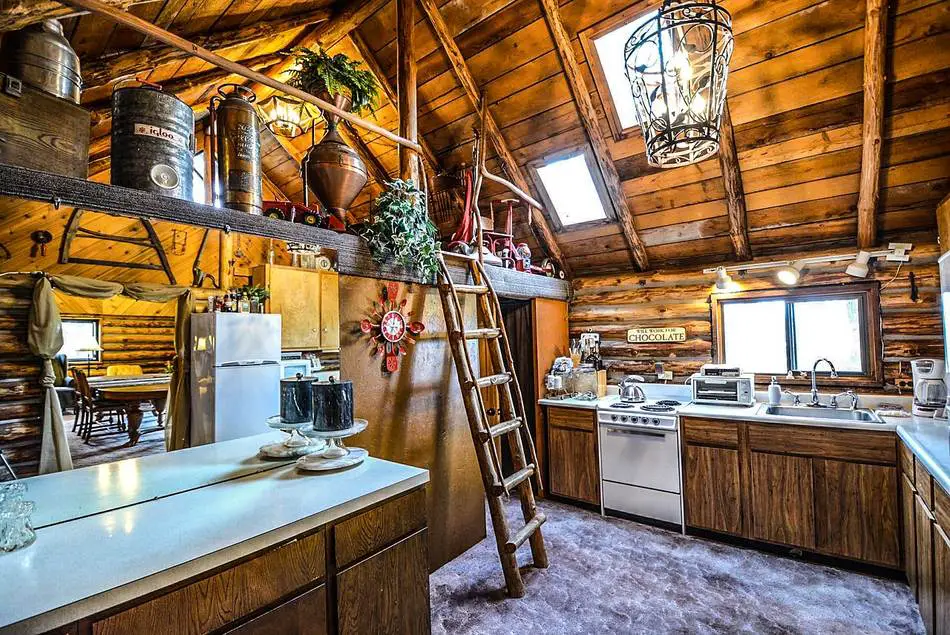
The Daily and Current Costs of Living off the Grid
Now that you have your house running, your garden irrigated and your chicken laying eggs, it’s time to mention the costs of a day-to-day life. The off-grid lifestyle requires some additional expenses for the things that you most definitely cannot produce on your own, the total cost of which can run up to $1,000 per month.
- Household items are the things that you need to have around the house and that you certainly cannot make by yourself. These can be light bulbs, oil, garden tools, fixing tools, kitchen utensils, plates and pots, batteries, various appliances, and so on.
- Gasoline – you need to power your equipment and cars, so you will have to spend money on fuel as well as oil for the vehicles and the machinery.
- Travel – unless you intend to stay on your property 365 days a year, it will be nice to put some money aside for a family trip and vacation.
- Food – not everything can be produced by your mini-farm’s plants and animals. Condiments, sugar, salt, soda, oils, yeast – a few bucks will be spent on purchasing all these necessary additions to your food.
- Healthcare is a noticeable cost of living. You can save some money on the side for the time of need, or get yourself a good health insurance.
- Taxes are unavoidable. Prepare yourself, you will most likely need to pay income tax as well as property tax. These, of course, differ from state to state, or whether you live off the grid in the United States or plan to live off the grid in Canada.
- Insurances can be optional. However, almost all of the states require that you have to get the auto insurances, and sometimes even the health insurance. Find out about these things before you be surprised by them.
- Maintenance is another unavoidable expense. Any of the previously mentioned systems must be taken care of. Worn out parts demand to be replaced, either by your or an expert. Make sure you have put aside money for this expense as well.
- The Internet is not a luxury these days, but a necessity. You will probably want to stay connected to the Web, which involves a monthly fee and some initial setup, all of which is covered in my article about off grid Internet.
Reducing the Costs by Living off the Grid
While all the above expenses might sound alarming, you need to keep in mind that the off-grid lifestyle can actually reduce the costs of daily living. Let’s list the factors that can positively impact your budget and improve your life.
Energy Costs
The energy costs are rising every year, as the energy companies squeeze another buck from their customers. But since you have moved to live off the grid, you are starting to produce your own energy, either from the sun or the wind, not to mention using the earth’s heat to your advantage as well.
Yes, you will need to invest a few thousands of dollars to install the alternative energy systems and to buy the batteries. However, from this point forward, you will not pay any bills sent by the energy company. You are actually starting to save money once your solar panels or wind turbines are hooked to your house. In a few years, the money you have invested into them will be paid off. Not to mention that it’s a clean energy, so it won’t negatively impact the environment and your health.
Additional way to significantly cut energy costs is purchasing necessary devices – but in their smaller or more portable version. For instance, instead of a huge washing machine consider getting (at least temporarily) a portable washing machine.
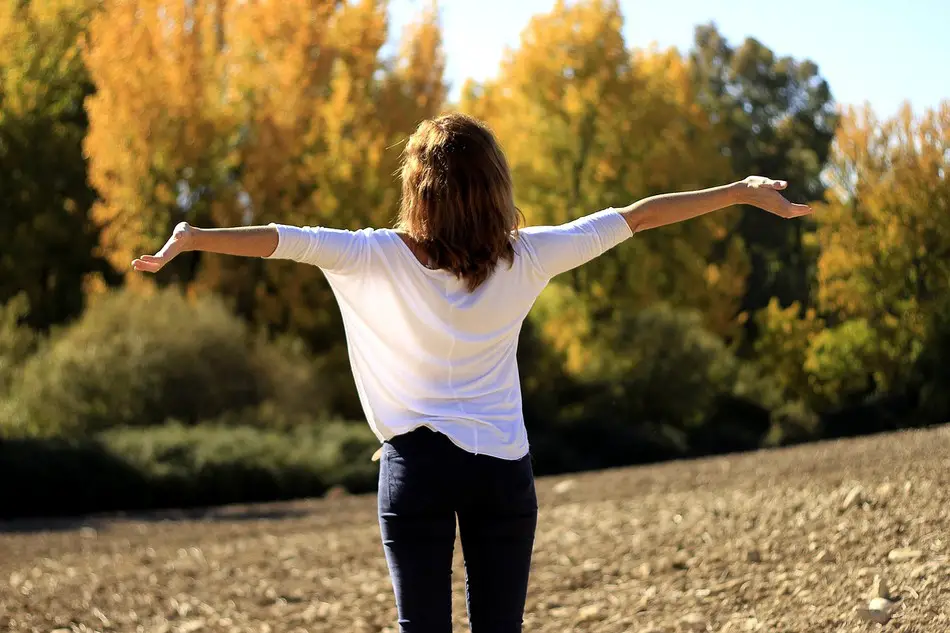
Healthy Lifestyle Saves Money
The off grid experience greatly improves you, both mentally and physically. Which means saving money on doctors, shrinks and medicine. Here are a few examples how:
- The food that you grow and produce is much healthier than anything you can get in a city’s supermarket. This is because when you grow it, you use no chemicals and pesticides, the natural way.
- When you run your own farm and homestead, you are physically active. You will be much stronger, fitter and healthier. The constant exercise means, once again, that you are spending less money on medical bills.
- Fresh air is another terrific factor in favor of your wellbeing. Nothing can compare to the quality of air in the country.
- Stress-free life also has a positive impact on your health. You are no longer living the hectic (and polluted) city life, you live at your own pace, thus reducing stress that negatively affects your body.
Making More Than Wasting
Thanks to the off grid lifestyle, the consumerist habits are no longer necessary. When we are “on the grid”, we consume a lot without making anything. We mindlessly spend resources and produce waste. However, once you move to a land of your own, you will start appreciating everything that you make. No money will be wasted on unnecessary products.
Moreover, you will start recycling regularly, which means saving even more money on water and fertilizers. The off grid life is renewable and sustainable. Eventually, your garden and livestock will produce more than you can consume, and you can sell the produce or barter it for other goods.
Community
Speaking of bartering, you will probably get to know a few good people in your community. They can help you save even more money by providing essential knowledge and information about this area, its markets, stores, best deals, contractors, regulations, and so on. Furthermore, you can exchange goods with them, forgoing the use of currency. A happy and positive community is a true treasure. I created a list of off-the-grid communities in the world, feel free to choose one.
Better Control of Your Life
The off gird life offers much better control of your life, your time and your finances. Your mindset is firm and clear, you have the best possible view of what you are doing on a daily basis, how much you need to spend and how much you can earn.
The benefits, of course, go even beyond the monetary expenses and savings. Families bond and grow stronger. The relationships improve and last. Friendships and community become a great source of joy and support. The urban toxicity is left behind and forgotten.
Once you have better control of your time, you can dedicate some of it to creative work. Reawaken old talents or find a few new ones. You probably did not have time for these before moving to the country.
You now also have time to fully appreciate nature, its beauty, its plants, animals, resources. Nature calms you down and makes you focused, reducing all that stress, cleansing your body’s systems.
This life is also much safer than the one you had in the urban environment. You don’t need to buy a self-defense weapon to carry at all times. This is the safest place to raise a family.
All in all, understand how flexible your life becomes. You are no longer a slave to the urban life’s rhythm and circumstances. You are in full control of what you do, when you do it, and how much you spend.
In Conclusion
As you can see, living off the grid is far from free. The total cost of purchasing a lot and building a functioning house can be near $100,000 or even more. But don’t let this deter you from realizing your dreams. Once you’ve settled and established your garden or farm, the investment will eventually pay off and you can fully enjoy your rediscovered freedom. In the long run, you will save more and spend less, while enjoying the best life you can possibly have.

